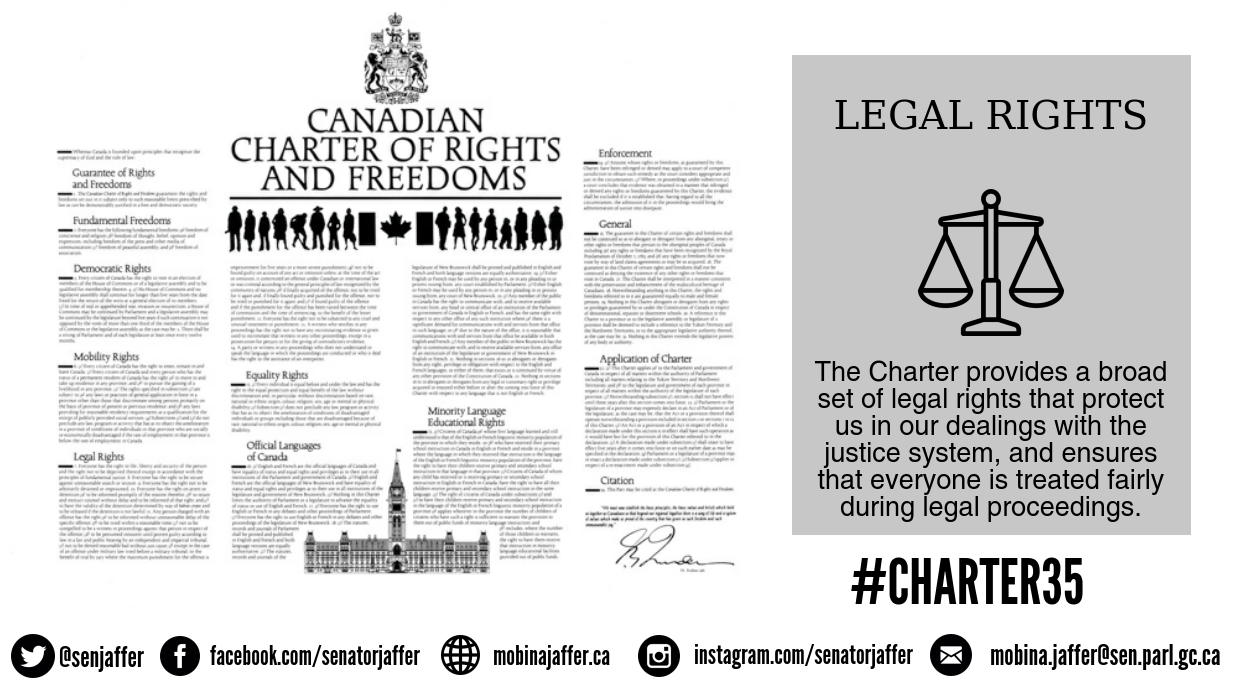
Out of all the sections in the Charter, few have seen as many landmark rulings as Section 7, which contains the right to life, liberty and security of person.
In my previous blog, I demonstrated this by highlighting how the right to life has changed over the last 35 years- and particularly how it evolved to allow Canadians to control all parts of their life- including the right to medically assisted suicide.
However, the right to life is only one third of Section 7. The other two rights of liberty and security of person have evolved too, and also demonstrate how the Living Tree Doctrine changes the way our constitution is read to ensure fairness for all Canadians.
For example, changes to the right to liberty- which, at its most basic level is the right to make decisions without being stopped- focus on restricting it to prevent its abuse. For example, almost immediately after the Charter’s signing, our courts specified that measures like imprisonment and parole protect the common good and are therefore acceptable.
Other cases ensured that Liberty would not be used to allow groups to control its members. For example, in B. (R.) v. Children’s Aid Society, a family of Jehovah’s witnesses argued that the right to liberty allows them to make decisions about their child- even if that decision involves preventing life-saving treatment.
The court ruled against the family, stating that a person’s rights are between them and the government, and not between a person and a family member. Since then, groups have not been able to use their right to liberty to make choices for its members- that right belongs to the individual alone.
On the other hand, the right to Security of Person- or protection from harm by the government- has focused more on expanding it to answer some of society’s most controversial questions. In each instance, the court interpreted to prioritize the safety of Canadians above all else.
Most famously, this right has been interpreted in a way that prevents any kind of abortion bans in Canada. According to R. v. Morgentaler, any harm a woman experiences by being refused access to abortion counts as harm that is inflicted by the state, meaning that abortion bans violate the Section 7 rights of women.
More recently, the right to the security of the person has been used to enable one of the most effective tools against the ongoing opioid crisis: safe injection sites.
In 2011, when these sites were first being established, the previous government threatened to prosecute a number of these sites in Vancouver for allowing drug use.
In response, a coalition of community service societies from Downtown Eastside Vancouver took the government to court and argued that preventing the life-saving work of safe injection sites endangered drug users. The Supreme Court sided with the community service societies- and even went as far as to order the government to exempt safe injection sites from prosecution for its activities.
Thanks to this ruling, these safe injection sites have had the opportunity to prove their effectiveness, and are even central to the current government’s strategy against the opioid crisis!
Thanks to the broad concepts provided by section 7, Canadians can go to court and fight injustices in our society that the framers of the Charter had never anticipated at the time. Many of these fights are even continuing to this very day!
Please look forward to my next blog, where I will be outlining some of these ongoing battles in our courts.